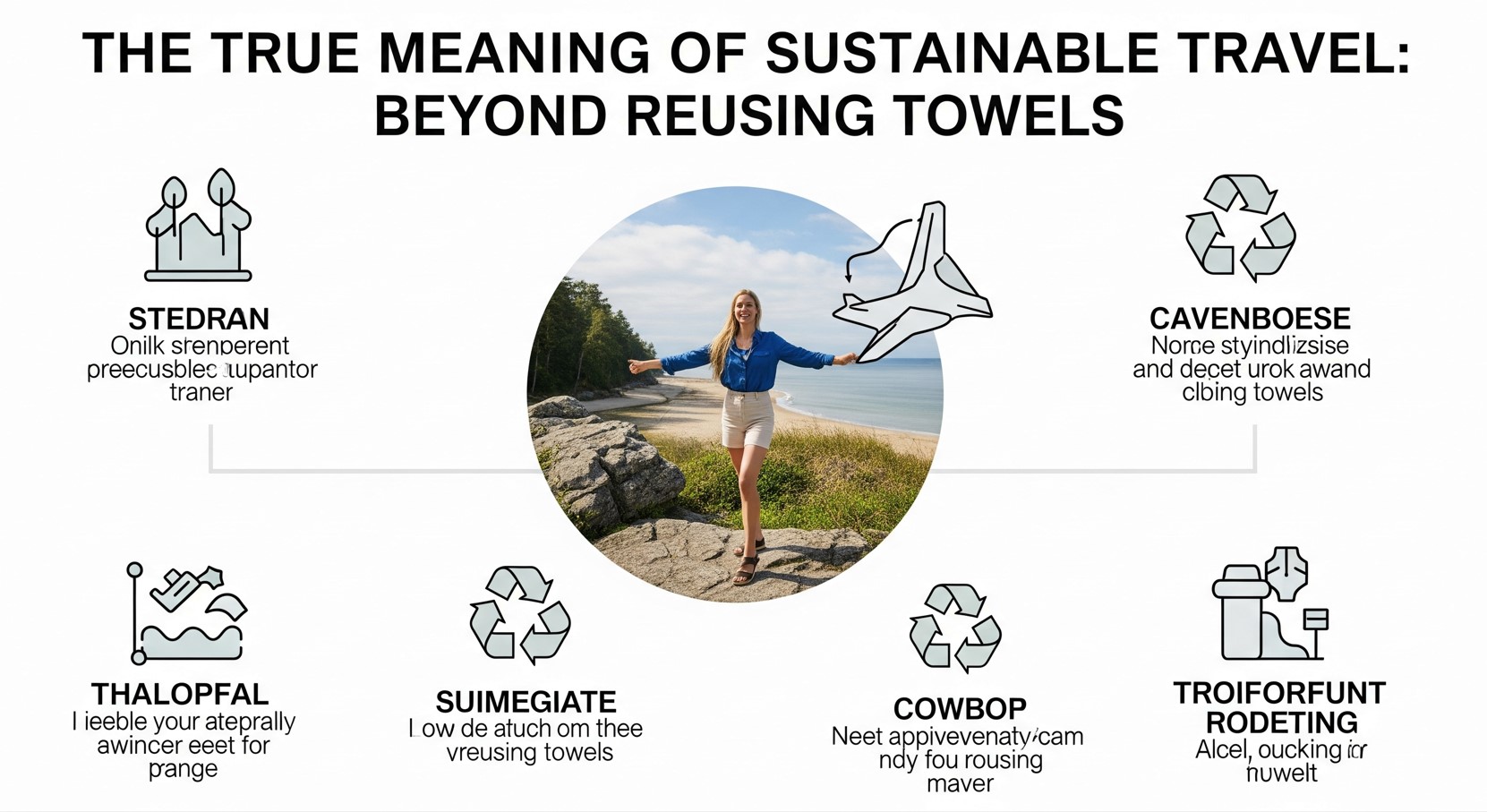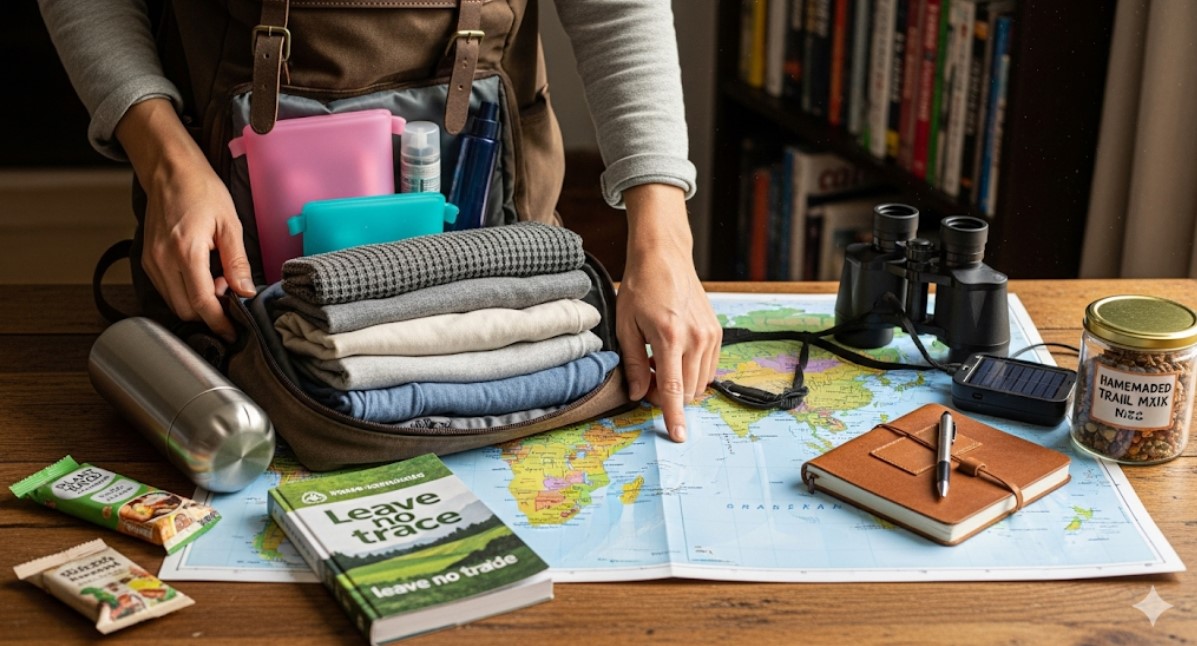Remember the feeling? The thrill of booking a flight, the anticipation of stepping into a world completely different from your own. For decades, travel has been painted as an escape—a checklist of landmarks to conquer, a collection of postcard-perfect photos. We’ve followed the well-trodden paths laid out in glossy brochures, often becoming passive observers in a perfectly curated show. But a quiet revolution is underway. A growing number of travelers are looking for something more, something real. They are seeking connections, not just collections. They want to leave a place better than they found it. This is the heart of authentic and sustainable travel.
This isn’t about sacrificing comfort or adventure. It’s about enriching them. It’s the difference between a buffet at an all-inclusive resort and a home-cooked meal in a local family’s kitchen. It’s the difference between buying a mass-produced souvenir and purchasing a handcrafted piece directly from the artisan who made it. This guide is your roadmap to go beyond the brochure, to transform your travels from a simple vacation into a meaningful exchange that benefits you and the destinations you have the privilege to explore.
The True Meaning of Sustainable Travel: Beyond Reusing Towels
The term “sustainable travel” often conjures images of rustic jungle lodges and carrying your own water bottle. While those are parts of the picture, the concept is far broader and more impactful. True sustainability in travel rests on three core pillars, creating a balanced approach that ensures our explorations don’t come at the cost of the planet or its people.

The Environmental Pillar: Protecting Our Planet
This is the most intuitive aspect of sustainable travel. It involves making conscious choices to minimize your negative impact on the natural environment. This means reducing your carbon footprint from transportation, conserving water and energy, properly disposing of waste (and creating less of it), and choosing activities that respect and protect local ecosystems and wildlife. It’s about ensuring the pristine beaches, lush rainforests, and vibrant coral reefs we love remain healthy for generations to come.
The Social Pillar: Empowering People
Travel is fundamentally about people. The social pillar of sustainability focuses on respecting and honoring the culture, heritage, and well-being of the host community. It means learning about local customs and traditions before you go, dressing and behaving in a culturally sensitive manner, and engaging in authentic exchanges that foster mutual respect. It also means protecting communities from the negative impacts of over-tourism, such as displacement and the commodification of their culture. It’s about being a gracious guest in someone else’s home.
The Economic Pillar: Fueling Local Growth
Where does your money go when you travel? The economic pillar is about ensuring that the financial benefits of tourism flow directly into the local community. Instead of profits being siphoned off by large, foreign-owned corporations, sustainable travel encourages supporting locally owned businesses. This includes staying in family-run guesthouses, eating at local restaurants, hiring local guides, and buying authentic crafts from local artisans. When your spending empowers the community, it provides a powerful incentive for them to protect their natural and cultural heritage.
Phase 1: Pre-Trip Preparations for the Conscious Traveler
A successful sustainable journey begins long before you pack your bags. Thoughtful planning is the foundation for a trip that is both memorable for you and beneficial for your destination.

Choosing Your Destination with Purpose
Consider destinations that are actively working towards sustainability or are off the beaten path. Research places that are struggling with “over-tourism” and consider visiting during the shoulder or off-season. This not only provides a more authentic experience with fewer crowds but also helps distribute the economic benefits of tourism throughout the year. Look into countries or regions known for their national parks, conservation efforts, and community-based tourism initiatives.
Accommodations That Care: Where You Stay Matters
Your choice of lodging is one of the most significant decisions you’ll make. Look beyond the major international chains and seek out accommodations with strong eco-credentials.
- Eco-lodges and Green Hotels: Look for certifications like Green Key, EarthCheck, or Rainforest Alliance. These places often use renewable energy, have robust recycling programs, and source their food locally.
- Homestays and Family-Run Guesthouses: Staying with a local family provides an unparalleled cultural exchange and ensures your money directly supports them.
- Community-Owned Tourism Projects: In many parts of the world, entire villages or communities run tourism enterprises, offering an authentic glimpse into their way of life.
The Art of Packing Light and Green
Every item in your suitcase has an impact. Packing thoughtfully can significantly reduce your environmental footprint.
- Pack Light: A lighter bag means less fuel is consumed by planes and vehicles. It also makes it easier to use public transport.
- The Reusable Trio: A reusable water bottle, coffee cup, and shopping bag are non-negotiable. This drastically cuts down on single-use plastic waste.
- Solid Toiletries: Shampoo bars, conditioner bars, and solid toothpaste reduce plastic packaging and the risk of spills.
- Reef-Safe Sunscreen: If you plan to swim in the ocean, use mineral-based sunscreens (zinc oxide, titanium dioxide) that don’t contain oxybenzone and octinoxate, which are harmful to coral reefs.
Carbon Offsetting: Acknowledging Your Footprint
Air travel has a significant carbon footprint. While the best option is to fly less and take longer trips, this isn’t always feasible. Carbon offsetting allows you to invest in projects that reduce greenhouse gas emissions, such as reforestation or renewable energy development. Research reputable and certified offsetting programs like Gold Standard or Verified Carbon Standard to ensure your contribution is making a real difference.
Phase 2: On the Ground: Making a Positive Impact Every Day
Once you’ve arrived, your daily choices continue to shape the impact of your journey. This is where sustainability moves from theory to practice.
Getting Around: Your Transport Choices
Whenever possible, opt for the most sustainable mode of transport. Walking and cycling are not only zero-emission but also the best ways to discover the hidden gems of a city. For longer distances, choose public transportation like trains and buses over taxis or rental cars. You’ll reduce your carbon footprint and get a better feel for local life.
The Taste of Authenticity: Eating and Drinking Locally
Food is a gateway to culture. By eating and drinking locally, you support the local economy and reduce food miles. Seek out restaurants that use seasonal, locally sourced ingredients. Visit farmers’ markets to see, smell, and taste the region’s bounty. Always say no to straws and carry your reusable bottle for water refills.
Shopping with a Conscience: Souvenirs That Tell a Story
Avoid mass-produced trinkets that were likely imported. Instead, look for souvenirs that are handmade by local artisans. Visit workshops, co-operatives, and local markets. Buying directly from the creator ensures they receive a fair price for their work. Choose items made from sustainable materials and ask about the story behind the craft. A souvenir with a story is a far more meaningful memento.

Wildlife Encounters: An Ethical Approach
Observing wildlife can be a highlight of any trip, but it must be done ethically. A truly ethical encounter prioritizes the animal’s welfare. This means no riding elephants, no posing with drugged tigers, and no swimming with dolphins in captivity. Choose tour operators who follow strict wildlife viewing guidelines, maintain a safe distance, and contribute to local conservation efforts. The rule is simple: observe, don’t interact.
Phase 3: The Human Connection: Engaging with Culture Respectfully
Authentic travel is built on a foundation of respect. How you interact with the local culture can make the difference between being a tourist and being a welcome guest.
Learn Before You Land: The Power of Research
Invest time in learning about the local culture, traditions, and social norms. Understanding basic etiquette, appropriate dress, and a few key phrases in the local language (like “hello,” “thank you,” and “excuse me”) goes a long way in showing respect. This simple effort can open doors to more genuine interactions.
The Ethics of Photography
Your camera can be a bridge or a barrier. Always ask for permission before taking a photo of someone, especially children. Be mindful of sacred sites and cultural ceremonies where photography may be inappropriate. A photograph should be a memory of a respectful interaction, not a stolen moment. Consider putting the camera away sometimes and simply being present.
Rethinking “Voluntourism”: How to Help, Genuinely
The desire to help is admirable, but many short-term “voluntourism” projects can do more harm than good, particularly those involving orphanages or unqualified labor. If you want to volunteer, do thorough research. Look for organizations that require long-term commitments, specific skills, and have a proven, positive, and sustainable impact on the community. Often, the best way to help is simply by supporting the local economy through conscious spending.
The Journey Home: Bringing Your Sustainable Mindset with You
The end of your trip isn’t the end of your journey as a sustainable traveler. The experiences and perspectives you gain can create a lasting ripple effect.
Share Your Story, Inspire Others
When you share your travel stories, focus on the authentic experiences. Talk about the amazing local restaurant you found, the artisan you met, or the community-run tour that changed your perspective. By championing sustainable practices, you can inspire your friends and followers to travel more consciously too.
Continue the Support from Afar
Did you fall in love with a particular craft co-operative or a local conservation project? Find out if you can support them from home, perhaps by purchasing their goods online or making a donation to their cause. Stay informed about the issues facing the destination and be an advocate for its protection.
Conclusion: Every Trip is an Opportunity
Becoming a sustainable traveler isn’t about achieving perfection. It’s about progress. It’s a shift in mindset from “what can this destination do for me?” to “how can I experience this destination respectfully and leave a positive trace?” Every decision, from the coffee you buy to the tour you take, is an opportunity to vote with your wallet for a better, more equitable, and more sustainable world. By traveling with intention, curiosity, and respect, you don’t just see the world—you become a part of its preservation.








